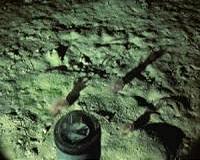| . |  |
. |
Copenhagen, Denmark (SPX) Jul 02, 2010 The defining feature of social insects is that societies contain queens, which specialise in laying eggs, as well as workers, which are mostly infertile but take care of the offspring and the nest. However, when the queen dies or is re-moved, workers begin laying eggs of their own. Previous observations have suggested that queens possess a specific pheromone which keeps the workers infer-tile, but the pheromone has never been identified except in the well-studied honeybee. Queen pheromones have a lot to tell us about how sociality evolved. For example, if the pheromone was found to be brain-washing the workers into doing something that was bad for them, this would suggest that sociality is rife with hidden conflicts. Alternatively, the pheromone might be more like an advertise-ment that demonstrates to the workers that the queen is doing a good job. Workers that can smell that their queen is laying lots of eggs are expected to remain infertile and let the queen do what she does best. After identifying a candidate queen pheromone in the black garden ant, researchers from the Centre for Social Evolution at the University of Copenhagen (Luke Holman, Charlotte J�rgensen, John Nielsen and Patrizia d'Ettorre) made a synthetic copy of the pheromone to definitively test its function. They found that worker ants separated from their queen developed large ovaries in preparation for laying eggs. However, if the orphaned ants were given a glass model queen coated in synthetic queen pheromone, they remained infertile. The authors also found that the queen's eggs are covered in pheromone, and that sick queens pro-duced less pheromone. Together, these results suggest that the queen phero-mone lets the workers know that the queen is laying many eggs and is in good health. The queen pheromones of other social insects, including wasps and ter-mites, remain to be found. More will hopefully be discovered soon, and we will be able to determine whether there are universal queen pheromones, or whether they are highly specific to each species. This will reveal how fast the pheromones evolve and shed light on why specific chemicals became queen pheromones.
Share This Article With Planet Earth
Related Links University of Copenhagen Darwin Today At TerraDaily.com
 Ecological Change In The Abyss - The Amperima Event
Ecological Change In The Abyss - The Amperima EventHampshire, UK (SPX) Jun 30, 2010 We often think of the deep ocean floor as stable, relatively unvarying environment untroubled by surface climate conditions. But long-term monitoring has shown that animal communities living at great depth on the seafloor can change radically over remarkably short periods, and that these events are ultimately driven by climate. Such faunal changes are exemplified by the 'Amperima Event' - ... read more |
|
| The content herein, unless otherwise known to be public domain, are Copyright 1995-2010 - SpaceDaily. AFP and UPI Wire Stories are copyright Agence France-Presse and United Press International. ESA Portal Reports are copyright European Space Agency. All NASA sourced material is public domain. Additional copyrights may apply in whole or part to other bona fide parties. Advertising does not imply endorsement,agreement or approval of any opinions, statements or information provided by SpaceDaily on any Web page published or hosted by SpaceDaily. Privacy Statement |